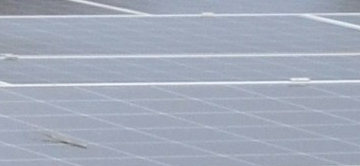With the revision of its "Guidelines on State aid for climate, environmental protection and energy" and the publication of a complementary act to the European Taxonomy designed to guide investments to achieve climate neutrality in 2050, the European Commission is making a new departure from its dogma of "no alternative to competition". The shift in priorities imposed by the fight against global warming requires public intervention that could be simple, but which politicians like to complicate.
Priority to environmental protection
In 1996, Directive 96/92 concerning common rules for the internal market in electricity gave the European electricity industry three years to learn to live in a competitive framework without any form of discrimination. This text led to the vertical unbundling of the large groups into production, transmission and trade segments, and to the creation of wholesale and retail energy markets. The following year, a protocol was signed in Kyoto, by which the signatory States committed themselves to reducing their greenhouse gas (GHG) emissions responsible for global warming. Since these emissions are a negative externality produced by domestic and industrial activities, their fate could have been settled by the creation of a Pigou tax. But politicians prefer the tortuous way to the direct way which risks to shock public opinion and then reduce their chances to be reelected. The Kyoto commitment triggered the publication of a series of texts in the European Union aimed at charging for certain GHG emissions on a quota market, subsidizing renewable energy technologies, and making energy producers pay to reduce their sales, for example through energy saving certificates. In this crusade, the European authorities have progressively accepted to sacrifice one of the pillars of the competition policy they were promoting, the prohibition of public aid "which distorts or threatens to distort competition by favouring certain undertakings or the production of certain goods" (art. 107(1) of the Union Treaty). However, there are exceptions to this prohibition, some in categories that do not need to be notified to the Commission (General Block Exemption Regulation, in particular section 7 "Aid for environmental protection"), others on a case-by-case basis that the Commission may accept under conditions after notification. It is to the latter that the guidelines mentioned above apply.
Easing restrictions on state aid
The need to decarbonize the economy has become a political priority, and the electricity industry is the key instrument for doing so. To achieve the goal of "carbon neutrality by 2050" ('European Green Deal'), not only must industry, housing and transport be electrified, thus increasing electricity production by a factor of almost three, but electricity must also be decarbonized, which requires a fundamental change in the current energy mix. In the absence of a consistent carbon price that would give the right incentives to decentralized decision-makers, it is necessary to use a system of obligations and/or subsidies, and therefore centralized steering tools. The first step was to promote wind and solar energy through off-market feed-in tariffs or premiums to supplement the market price (see CSPE). But investing in wind and photovoltaic megawatts does not guarantee that they will produce megawatt-hours, as shown by the slowdown of winds in the United Kingdom during the summer of 2021 and as can be verified every evening when the sun sets. To compensate for this variability, we need to reduce energy consumption (but except for some electro-intensive firms, demand-side shaving is not very popular), import the missing energy (if the neighbouring interconnected countries do not suffer from the same problem at the same time), draw on stocks (when we will be able to store electrical energy on an industrial scale) or turn on thermal power plants (if their economic and environmental cost is not too high). In short, "security of supply" needs to be addressed, a theme that was almost absent from the 2014 version of the guidelines and that occupies an entire section of the 2022 version (section 4.8). In 2014, it was "generation adequacy," a concern related to potential market failures. Since the sale of megawatt-hours at highly variable prices did not guarantee revenues that gave the right incentives to invest, to the remuneration of energy it was necessary to add the remuneration of available megawatts, for example through capacity auctions.
With the new guidelines, we move from adequacy, a technical concept, to security, a concept that is more open to interpretation and somewhat anxiety-provoking. They encourage the use of public subsidies in a system where the intermittency of subsidized renewables increases the uncertainty of instantaneous deliveries that dispatchable power plants must make, especially those that burn natural gas and use decarbonization units. In short, Member States are now allowed to financially support, so that they do not close, the thermal power plants that are being pushed out by the subsidies to renewables. These successive texts thus seriously undermine the principle of non-distortion of competition that is supposed to motivate the Commission's actions in promoting a large and efficient electricity market.
Nomenclature of green activities
State aid to nuclear power plants is explicitly excluded from the guidelines (section 2.1 of the Annex). Because it was still under review, nuclear technology also does not appear in the European Taxonomy of June 2021, which aims to place investments on the trajectory towards carbon neutrality in 2050. As a follow-up to its "Action Plan: Financing Sustainable Growth", the Commission has started to draw up a list of activities whose impact on the environment is deemed positive, and which will therefore be able to access 'green financing' at reduced rates. These activities are measured against six objectives, two of which relate to climate change and one to pollution. For an activity to be classified as "sustainable", it must contribute substantially to one of the six environmental objectives without causing significant harm to the other five. The design of the balance that will weigh the substantiality of contributions and the significance of harm will be the subject of intense negotiations in which the search for efficiency through competition will be secondary to the defense of national interests.
The June 2021 Taxonomy is in the process of being amended with the publication on December 31, 2021 of a draft complementary delegated act integrating natural gas to replace coal on a transitional basis, and nuclear power, which contributes to reducing climate change and whose prejudice to other environmental objectives (in particular the sustainability of aquatic resources) remains low as long as the installations are based on the most efficient techniques and safety conditions. This integration has raised protests in some Member States, in the European Parliament, and even among some Commissioners. The catalog will therefore probably still be subject to adjustments after tough negotiations in a context of high energy prices and climate emergency.
*
* *
Wishing to reduce carbon emissions without a consequent carbon price means resorting to a range of indirect means that can ultimately prove much more costly. The obligation to acquire certificates proving that a certain reduction of energy consumption has been attained, the fixing of remunerations and capacities to be installed for renewables, and now the classification of technologies according to whether we want to lighten or increase the cost of their financing by the market and by the State are tools that belong to the tradition of state-run systems. With the current price surge, energy markets are under repeated attack, for example by the Polish Prime Minister against the European carbon market and by the French Minister of the Economy against the electricity market. These attacks are in line with the principle that one should kill the bearers of bad news to avoid disturbing the citizens. In this case, it is stated that "since the market bothers us, we must get rid of it". In reality, it is not the market mechanisms that are the problem, but the rules that frame them: defining the products exchanged, filtering the users, formatting the bids and the methods of payment, punishing breaches, etc. Since the ultimate objective is to fight global warming rather than efficiency, the rules of the energy markets must be reviewed so that they direct investments towards a decarbonized energy mix.





